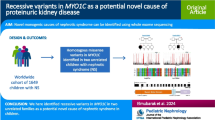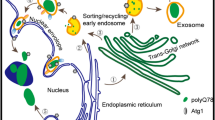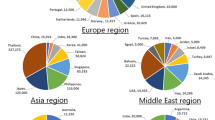Abstract
A novel missense variant (NM_005327.7: c.99C>G, p.Ile33Met) was discovered in 3-hydroxyacyl-CoA dehydrogenase (HADH), which is involved in congenital hyperinsulinism (CHI). This variant may be damaging or deleterious, as assessed using protein prediction software. This study aimed at the impact of this variant on islets and if it caused the leu-sensitive insulin secretion. The adeno-associated virus containing the HADH missense variant (p.Ile33Met), wild-type (WT) HADH or empty vector (EV) was constructed, and the rats were infected with it. Three weeks after the transfection, 15 rats were dissected to observe the effect of the variant on the islet tissue. Then we treated the remaining rats with leucine or sodium carboxymethyl cellulose (CMC-Na) by gavage and drew blood from the rat tail vein to detect the variations in blood glucose, serum insulin and serum glucagon. Further, we dissected the rats to observe the fluctuation of insulin and glucagon contents in pancreatic islets under the combined action of leucine and p.Ile33Met. Insulin and glucagon were observed in the islet tissue under an inverted fluorescence microscope, serum insulin and glucagon were detected by ELISA, and the blood glucose value was determined using a Roche glucometer. The positive area and average gray value of islet fluorescence pictures were analysed using the software Image J (USA). Rats expressing p.Ile33Met showed significantly higher insulin and glucagon content, as well as the islet area, compared to WT and EV rats. Moreover, after intragastric administration of leucine, the serum insulin content of the variant rats increased but the blood sugar level decreased significantly. Meanwhile, there was an appreciable decrease in the insulin content in rat pancreatic islet tissues. Our results suggest that the variant NM_005327.7: c.99C>G promotes the proliferation of pancreatic islets, enhances the secretion of insulin, and induces leu-sensitive hyperinsulinaemia.



Similar content being viewed by others
References
Agren A., Borg K., Brolin S. E., Carlman J. and Lundqvist G. 1977 Hydroxyacyl CoA dehydrogenase, an enzyme important in fat metabolism in different cell types in the islets of Langerhans. Diabetes Metab. J. 3, 169–172.
Ajala O. N., Huffman D. M. and Ghobrial I. I. 2016 Glucokinase variant-a rare cause of recurrent hypoglycemia in adults: a case report and literature review. J. Commun. Hosp. Int. 6, 32983.
Cabezas O. R., Flanagan S. E., Stanescu H., Garcia-Martinez E., Caswell R., Lango-Allen H. et al. 2017 Polycystic kidney disease with hyperinsulinemic hypoglycemia caused by a promoter variant in phosphomannomutase 2. Am. Soc. Nephrol. 28, 2529–2539.
Flanagan S. E., Kapoor R. R. and Hussain K. 2011 Genetics of congenital hyperinsulinemic hypoglycemia. Semin. Pediatr. Surg. 20, 13–17.
Galcheva S., Demirbilek H., Al-Khawaga S. and Hussain K. 2019 The genetic and molecular mechanisms of congenital hyperinsulinism. Front. Endocrinol. 10, 111.
Gutgold A., Gross D. J., Glaser B. and Szalat A. 2017 Diagnosis of ABCC8 congenital hyperinsulinism of infancy in a 20-year-old man evaluated for factitious hypoglycemia. J. Clin. Endocrinol. Metab. 102, 345–349.
Hardy O. T., Hohmeier H. E., Becker T. C., Manduchi E., Doliba N. M., Gupta R. K. et al. 2007 Functional genomics of the β-cell: short-chain 3-hydroxyacyl-coenzyme A dehydrogenase regulates insulin secretion independent of K+ currents. Mol. Endocrinol. 21, 765–773.
Kapoor R. R., James C., Flanagan S. E., Ellard S., Eaton S. and Hussain K. 2009 3-Hydroxyacyl-coenzyme A dehydrogenase deficiency and hyperinsulinemic hypoglycemia: characterization of a novel variant and severe dietary protein sensitivity. J. Clin. Endocrinol. Metab. 94, 2221–2225.
Kostopoulou E. and Shah P. 2019 Hyperinsulinaemic hypoglycaemia-an overview of a complex clinical condition. Eur. J. Pediatr. 178, 1151–1160.
Li C., Chen P., Palladino A., Narayan S., Russell L. K., Sayed S. et al. 2010 Mechanism of hyperinsulinism in short-chain 3-hydroxyacyl-CoA dehydrogenase deficiency involves activation of glutamate dehydrogenase. J. Biol. Chem. 285, 31806–31818.
Li L. J., Wang Y. B., Qu P. F., Ma L., Liu K., Yang L. et al. 2020 Genetic analysis of Yunnan sudden unexplained death by whole genome sequencing in Southwest of China. J. Forensic Leg. Med. 70, 101896.
Li M., Li C., Allen A., Stanley C. A. and Smith T. J. 2011 The structure and allosteric regulation of glutamate dehydrogenase. Neurochem. Int. 59, 445–455.
MacMullen C., Fang J., Hsu B. Y., Kelly A., de Lonlay-Debeney P., Saudubray J. M. et al. 2001 Hyperinsulinism/hyperammonemia syndrome in children with regulatory variants in the inhibitory guanosine triphosphate-binding domain of glutamate dehydrogenase. J. Clin. Endocrinol. Metab. 86, 1782–1787.
Newsholme P., Bender K., Kiely A. and Brennan L. 2007 Amino acid metabolism, insulin secretion and diabetes. Biochem. Soc. Trans. 35, 1180–1186.
Nolan C. J., Madiraju M. S., Delghingaro-Augusto V., Peyot M. L. and Prentki M. 2006 Fatty acid signaling in the beta-cell and insulin secretion. Diabetes 55, 16–23.
Nykamp K., Anderson M., Powers M., Garcia J., Herrera B., Ho Y. Y. et al. 2017 Sherloc: a comprehensive refinement of the ACMG-AMP variant classification criteria. Genet. Med. 19, 1105–1117.
Okada S., Fukunaga S., Ohta H., Furuta T., Hirano R., Motonaga T. et al. 2020 Cerebral insufficiency caused by diazoxide in a premature neonate with congenital hyperinsulinism. Neuropediatrics 51, 211–214.
Pinney S. E., Ganapathy K., Bradfield J., Stokes D., Sasson A., Mackiewicz K. et al. 2013 Dominant form of congenital hyperinsulinism maps to HK1 region on 10q. Horm. Res. Paediatr. 80, 18–27.
Roy K., Satapathy A. K., Houhton J., Flanagan S. E., Radha V., Mohan V. et al. 2019 Congenital hyperinsulinemic hypoglycemia and hyperammonemia due to pathogenic variants in GLUD1. Indian J. Pediatr. 86, 1051–1053.
Santer R., Kinner M., Passarge M., Superti-Furga A., Mayatepek E., Meissner T. et al. 2001 Novel missense variants outside the allosteric domain of glutamate dehydrogenase are prevalent in European patients with the congenital hyperinsulinism-hyperammonemia syndrome. Hum. Genet. 108, 66–71.
Satapathy A. K., Jain V., Ellard S. and Flanagan S. E. 2016 Hyperinsulinemic hypoglycemia of infancy due to novel HADH variant in two siblings. Indian Pediatr. 53, 912–913.
Snider K. E., Becker S., Boyajian L., Shyng S. L., MacMullen C., Hughes N. et al. 2013 Genotype and phenotype correlations in 417 children with congenital hyperinsulinism. J. Clin. Endocrinol. Metab. 98, E355-363.
Stanley C. A., Lieu Y. K., Hsu B. Y., Burlina A. B., Greenberg C. R., Hopwood N. J. et al. 1998 Hyperinsulinism and hyperammonemia in infants with regulatory variants of the glutamate dehydrogenase gene. N. Engl. J. Med. 338, 1352–1357.
Suh S. W., Hamby A. M. and Swanson R. A. 2007 Hypoglycemia, brain energetics, and hypoglycemic neuronal death. Glia 55, 1280–1286.
Tegtmeyer L. C., Rust S., van Scherpenzeel M., Ng B. G., Losfeld M. E., Timal S. et al. 2014 Multiple phenotypes in phosphoglucomutase 1 deficiency. N. Engl. J. Med. 370, 533–542.
van Loon L. J., Kruijshoop M., Menheere P. P., Wagenmakers A. J., Saris W. H. and Keizer H. A. 2003 Amino acid ingestion strongly enhances insulin secretion in patients with long-term type 2 diabetes. Diabetes Care 26, 625–630.
Vredendaal P. J., van den Berg I. E., Malingre H. E., Stroobants A. K., Olde W. D. and Berger R. 1996 Human short-chain L-3-hydroxyacyl-CoA dehydrogenase: cloning and characterization of the coding sequence. Biochem. Biophys. Res. Commun. 223, 718–723.
Vredendaal P. J., van den Berg I. E., Stroobants A. K., van der Aee D. L., Malingre H. E. and Berger R. 1998 Structural organization of the human short-chain L-3-hydroxyacyl-CoA dehydrogenase gene. Mamm. Genome 9, 763–768.
Acknowledgements
This work was funded by the National Natural Science Foundation of China (81460285, 81960573), the Applied Basic Research Projects of Yunnan Province (202101AY070001-008), and the Innovation Group of Kunming Medical University (CXTD201803). All authors are grateful to the Department of Laboratory at the Animal Science and Technology Achievement Incubation Center at Kunming Medical University for technical support and thoughtful insights.
Author information
Authors and Affiliations
Contributions
PPL and Y-BW contributed to the study design. WL, PFQ, JLD performed experiments and produced the first draft of the manuscript. LM, YMX, XT analysed the data. S-JW, KL, YHL captured pictures and image processing. P-PL and WL performed a final critical review of the manuscript. All the authors read and approved the final manuscript.
Corresponding author
Additional information
Corresponding editor: Durgadas P. Kasbekar
Rights and permissions
About this article
Cite this article
Long, W., Wang, YB., Qu, PF. et al. Functional analysis of HADH c.99C>G shows that the variant causes the proliferation of pancreatic islets and leu-sensitive hyperinsulinaemia. J Genet 101, 44 (2022). https://doi.org/10.1007/s12041-022-01381-y
Received:
Revised:
Accepted:
Published:
DOI: https://doi.org/10.1007/s12041-022-01381-y




